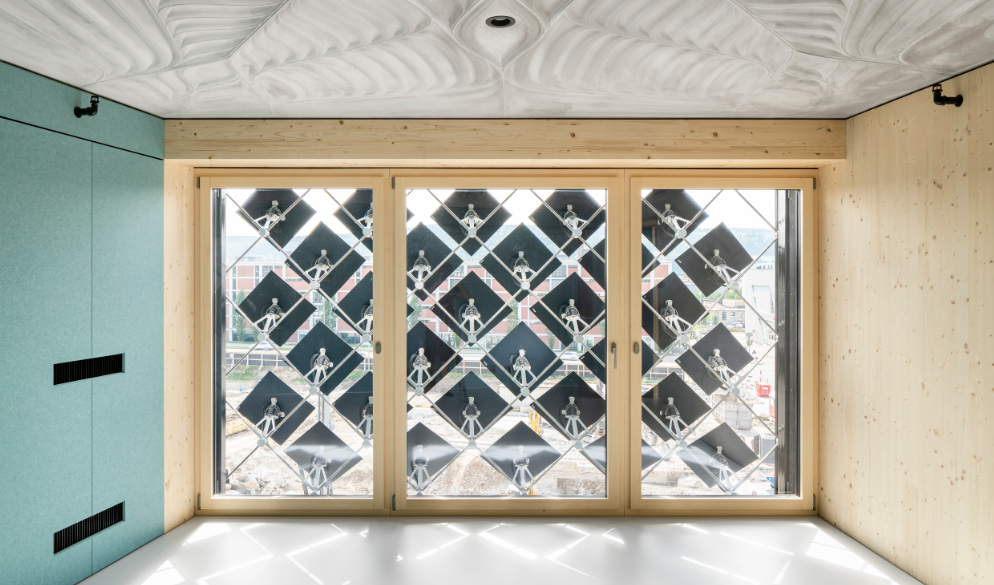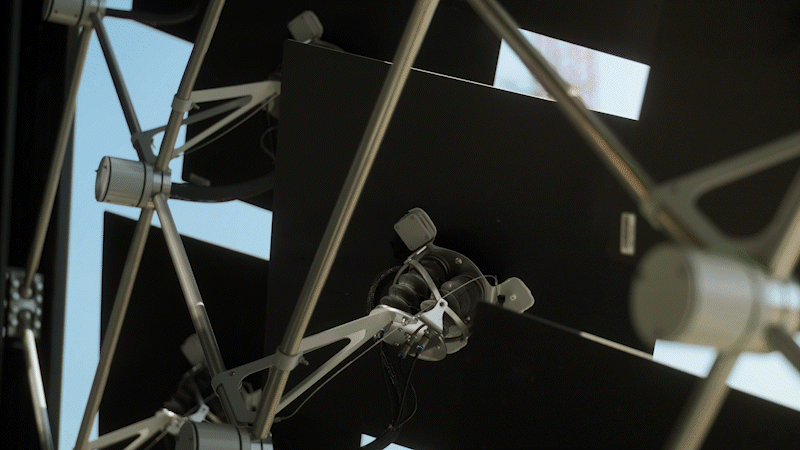"NEST provides the ideal environment to further develop our innovation"

-
Building façades hold great potential for producing and saving energy. Today, however, this potential is still underutilized.
-
As part of the HiLo project at NEST, researchers from the Chair of Architecture and Building Systems at ETH Zurich have developed an innovative adaptive solar façade that simultaneously optimizes electricity production and energy savings. Demonstrators of the façade were tested at the HiLo unit.
-
With the founding of the ETH Zurich spin-off "Zurich Soft Robotics", the product is now to be brought to the market under the name "Solskin".
Buildings are responsible for more than 40 percent of the global energy consumption. A large part of this is used to ensure user comfort - i.e. for heating and cooling. Particularly in view of current developments in the energy market, the big question is how we can cover our energy consumption in the future. It is crucial to find ways to tap new energy sources and at the same time reduce the energy consumption of buildings. One of these could be to better use façade surfaces.
This has potential, as the building façade is still largely unused and at the same time the central factor for either letting energy into the building or keeping it inside. Researchers at ETH Zurich have therefore developed an innovation as part of the NEST unit HiLo that can exploit this potential: an adaptive solar façade that not only optimizes electricity production but also reduces energy loss. Attached to the actual facade, this forms kind of a second skin for the building. The innovation is thus named "Solskin".
Simple architectural embedding
"We wanted to develop a façade that could be very easily installed on a building and optimally integrated into the architecture," says Bratislav Svetozarevic, explaining the idea behind the innovation. He has been involved in the development of "Solskin" from the very beginning – first in 2014 as a PhD student in Arno Schlüter's "Architecture and Building Systems" group at ETH Zurich and from 2018 as a Post Doc at ETH, and, working on related topics, at Empa.

"Solskin" consists of a lightweight substructure, which is attached to the façade. Mounted on it are small square thin-film solar panels that can be color-matched to the existing building envelope. In this way, the solar façade blends in perfectly with the overall appearance of the building. At the same time, the panels can be rotated individually in all directions. This is because behind each module there is a control unit that Svetozarevic and his colleagues have developed over the years. The special feature is that the panels are aligned using air pressure. The materials used are both robust and flexible, so that the system can withstand strong gusts of wind and precipitation.
Reality check
The idea of flexible alignment is to allow the solar façade to follow the position of the sun, optimizing electricity production. At the same time, "Solskin" also serves to actively shade the building in summer and thus reduce the need for cooling or to open up panels and allow the solar heat gains into the indoor space and thus save the heating energy in winter.
The first prototype tests at ETH Zurich made the researchers confident in the feasibility of the innovation. But would the innovative façade also work on a real building? To find the answer to this question, "Solskin" was attached to the façade of the HiLo unit.
"HiLo offered us the opportunity to install and test our system on an occupied building for the first time. This enabled us to record the usage and acceptance of the users," explains Svetozarevic. This is an important factor because, in addition to the actual system, the researchers also developed an algorithm that records the needs of the people working in the HiLo unit and can thus improve user comfort in addition to optimizing production. With the help of data from operations at NEST, this is now being further developed.
A bright future
The results of the prototypes and the pilot project at NEST point in a clear direction: "Solskin" can save energy – in fact, an enormous amount. While solar production can be increased by up to 40 percent compared to conventional solutions, heating and cooling energy savings of up to 80 percent are possible compared to conventional non-PV, non-adaptable shading systems. "We are pleased that we were able to show at NEST that our system works and what potential it has," says Svetozarevic. Various expert juries were also convinced of this potential and awarded "Solksin". Among the awards is the renowned Watt d'Or, which is presented annually by the Federal Office of Energy.
The next step is now the commercialization of the innovation. To this end, Bratislav Svetozarevic and his team founded the spin-off "Zurich Soft Robotics" in 2022 and have already landed a major contract. The company KELLER Druckmesstechnik AG in Winterthur wants to install "Solskin" on their new production building - on a total area of 1’300 m2.
In addition to its use on new buildings, the innovation is also ideal for upgrading older buildings. "Solskin" thus has great potential to optimize the energy efficiency of the entire building stock and provide an answer to the question of how we can continue to generate sufficient energy to operate our buildings in the future.
Zurich Soft Robotics is dedicated to developing innovative new products and solutions based on its patented hybrid hard and soft robotic drive combined with cutting-edge artificial intelligence to improve the lives of people and the planet. www.solskin.swiss
